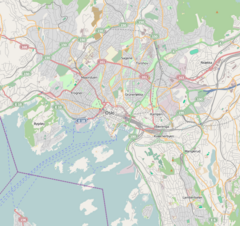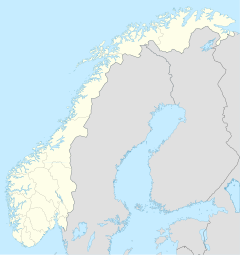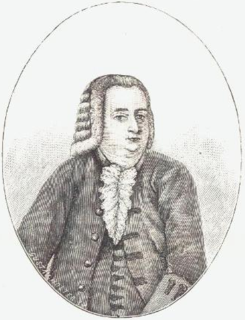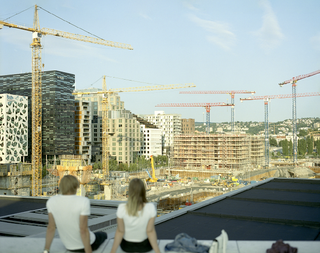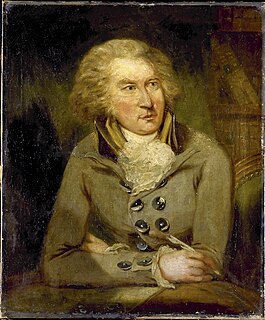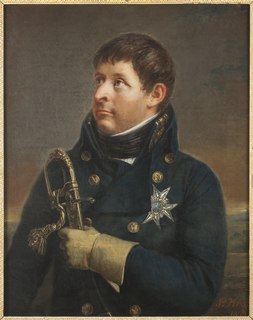
Sweden and Norway or Sweden–Norway, officially the United Kingdoms of Sweden and Norway, or as the United Kingdoms, was a personal union of the separate kingdoms of Sweden and Norway under a common monarch and common foreign policy that lasted from 1814 until its peaceful dissolution in 1905.

The Royal Palace in Oslo was built in the first half of the 19th century as the Norwegian residence of the French-born King Charles III of Norway, who reigned as king of Norway and Sweden. The palace is the official residence of the current Norwegian monarch while the Crown Prince resides at Skaugum in Asker west of Oslo.
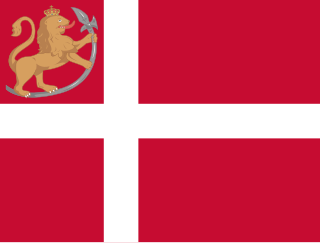
In August 1814, after a loss in the Swedish–Norwegian War, Kingdom of Norway was forced to join in a personal union with the Kingdom of Sweden, thereby becoming subject to a naval blockade by the British Empire, but remaining largely autonomous within the union. Although nationalist aspirations were not to be fully realized until the events of 1905, 1814 was the crisis and turning point in events that would lead to a fully independent Norway.

Christian Heinrich Grosch was a Norwegian architect. He was a dominant figure in Norwegian architecture in the first half of the 1800s.
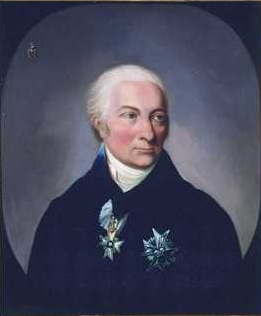
Carsten Tank Anker was a Norwegian businessman, civil servant, politician and one of the Fathers of the Constitution of Norway. He was the owner of the manor house in Akershus at which the original National Assembly (Riksforsamlingen) of Norway was held. The manor house has since then been given the name Eidsvollsbygningen.
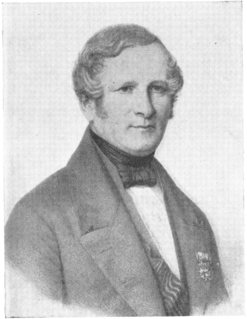
Frederik Gottschalck Haxthausen Due was a Norwegian military officer and statesman. Born in Trondheim, he entered the military at an early age, and took part in the Swedish-Norwegian War of 1814. After the two countries entered into union, Due was recruited to the Swedish court, where he was appointed Norwegian state secretary in Stockholm in 1823. In 1841 he became Norwegian prime minister, and acted as interpreter for Charles XIV John. After resigning in 1858, he spent the years until 1871 as an ambassador to Vienna and Munich.
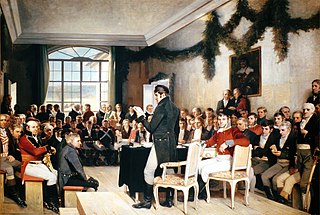
The Norwegian Constituent Assembly is the name given to the 1814 Constitutional Assembly at Eidsvoll in Norway, that voted the Norwegian Constitution and formalised the dissolution of the union with Denmark. In Norway, it is often just referred to as Eidsvollsforsamlingen, which means The Assembly of Eidsvoll.

The Battle of the Square was a skirmish between Norwegian demonstrators and forces of the United Kingdoms of Sweden and Norway that took place in Christiania in the evening of 17 May 1829.

Jens Gram Dunker was a Norwegian architect. He was noted for his work in the transition between neo-classicism and functionalism in Norwegian architecture. Dunker made significant contributions to Norwegian functionalism through different types of buildings: townhouses, housing blocks, townhouses, villas, theaters and hotels.

Cappelen is a German-origined Norwegian family. Johan von Cappelen immigrated to Norway in 1653, and became bailiff in Lier. A number of his descendants were businessmen, land owners, civil servants and politicians. The family is especially known for the former publishing company J.W. Cappelens Forlag. Variants of the name Cappelen are also used throughout Germany by many other families.
The Meeting of Notables was a meeting that took place before Norway declared independence from Denmark in 1814.

Ole Bernhard Øvergaard was a Norwegian architect.

Eidsvollsbygningen is a historic manor house located at Eidsvoll in Akershus, Norway. This is the building where the Constitution of Norway was signed on 17 May 1814.
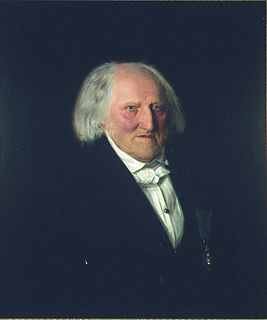
Poul Steenstrup was a businessman and Industrial entrepreneur who served as a representative at the Norwegian Constituent Assembly in 1814.
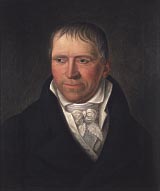
Diderik von Cappelen was a Norwegian wholesaler, merchant, shipowner, estate owner and politician in 1814. He is often referred to as Diderik von Cappelen but he spelt his name Didrich von Cappelen and is also referred to as Didrik von Cappelen.

Collett is a Norwegian family of English origin, descended from English-born merchant James Collett, who settled in Christiania in 1683. He married Karen Leuch, and died as the richest man in the city. The firm he founded, Collett & Leuch, later renamed Collett & Søn, was continued for four generations until 1821. The family became part of the patriciate of Christiania in the 18th century. His descendants continued to play important roles in Norwegian history and owned several properties, such as Buskerud Manor, Store Ullevål Manor, Flateby, Økern Manor and Firma Albert Collett. One of the most well-known family members are statesman and First Minister Jonas Collett.

Anna Henriette "Jette" Pauss, née Anna Henriette Wegner, was a Norwegian teacher, editor and humanitarian and missionary leader.



